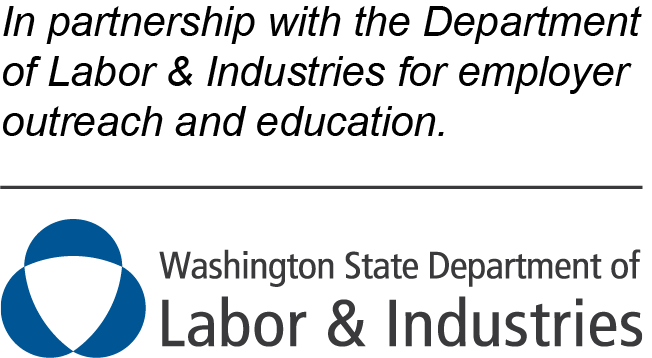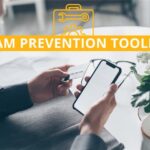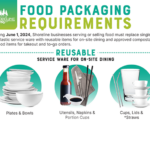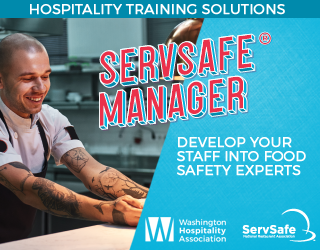
Employers are required to report an on-the-job fatality, in-patient hospitalization, amputation, or loss of an eye by calling the Division of Occupational Safety and Health at 1-800-423-7233.
You have eight hours to report a workplace fatality or in-patient hospitalization of any employee. You have 24 hours to report a non-hospitalized amputation or loss of an eye of any employee.
If you, as an employer or an agent of an employer, do not learn about the incident when it takes place, you must still report it within these time frames after you are notified.
If your business is in another state, and your employee is injured in Washington state, you must follow these reporting requirements. These requirements also apply if your business is based in Washington and your employee is injured while working out-of- state.
When reporting an incident, make sure to provide:
- Name and phone number of the best person to contact
- The name of the establishment/business
- The location/address where it happened
- The date and time it happened
- The names and phone number of employees harmed
- A brief description of the incident
- The date and time it happened
- The names and phone number of employees harmed
- A brief description of the incident
You are also required to preserve the scene of a workplace injury that results in hospitalization, amputation or death. You can move equipment as necessary to assist a victim or prevent further harm, but you must preserve the scene of a work- related incident until L&I has investigated. This includes not moving machinery, tools or personal protective equipment involved in the incident.
Recordkeeping (OSHA 300 Log)
Traveler accommodations are a designated industry subject to recordkeeping rules, and lodging employers must record workplace injuries and illnesses (including work-related COVID-19 illnesses) on an OSHA 300 log.
You must post the annual summary portion of the OSHA 300 log (form OSHA 300A) from February 1 through April 30 of each year.
The information in the log can be used to find and fix hazards affecting your workers and refine your workplace health and safety programs.
Lodging establishments with more than 20 different employees during the course of the previous calendar year must electronically submit information from OSHA Form 300A Summary of Work-Related Injuries and Illnesses to OSHA or OSHA’s designee.
Note: L&I is not involved in the transmission of OSHA Form 300A and does not use the information contained in the form.
Have a plan in place before an accident occurs!
An accident is typically a preventable incident where someone is harmed or fatally injured. A plan can reduce the chaos during an incident and help you ensure a safe and efficient investigation. For best results, make finding the “root cause/s” the focus of your investigations, not finding fault.
Once your plan is in place, be sure to inform and train everyone so they know who does what. Revisit your new employees plan when it might need updating and keep everyone informed and trained on any changes you make.
Required accident investigations
You must investigate any accident that results in a fatality, in-patient hospitalization, amputation, or loss of an eye. Employers are also required to investigate other accidents that cause serious injury and/or illnesses.
Recommended Investigations
Accidents requiring only first aid, or “close calls” (i.e., near-misses) where no one is hurt, are not required to be reported. These should still be investigated because they can help predict and prevent future accidents.
Benefits of investigations
Investigating accidents makes good business sense. Accidents are predictable – they are the logical outcome of hazards. Investigations help you:
- Identify hazards to prevent future accidents
- Discover and correct deficiencies in training, work practices, and/or equipment
- Reduce direct and indirect costs associated with accidents, including workers’ compensation costs
- Improve worker’s confidence and morale
- Strengthen your required Accident Prevention Program (APP)
When investigating:
- Preserve the scene and keep unauthorized personnel away. Cones, warning tape, and/or guards can help you do this. Be sure to check for danger and ensure victims’ safety.
- Document the scene. Take notes and use photo, video, and/or sketching to detail the who, what, where, when, and how details about the incident.
- Collect information from witnesses. Obtain other relevant information like equipment manuals, safety data sheets (SDSs), and company documents (like safety policies, operating procedures, training and injury records, logs, reports, etc.).
- Determine the root causes and best corrective actions to take. This requires technique (e.g., keep asking “Why” questions) and time for a deep evaluation, but it will make it easier to focus on the most effective corrective actions to take to prevent further incidents.
- Implement corrective actions. Some actions may take more planning and implementation time than others.
Accident/Incident Reporting Requirement Table
Action you must take:
In case of death or probably death, OR accident involving inpatient hospitalization of any employee
In case of any amputation or loss of an eye
In case of other serious injury or illness
Near miss (accident almost happened) or non-serious injury or illness
Report the accident to L&I and include details and your phone number.
Required within 8 hours
Required within 24 hours
Not required
Not required
Complete and document an investigation.
Required
Do NOT disturb
the accident scene
Required
Do NOT disturb
the accident scene
Required
Not required, but recommended
Additional Resources
Labor & Industries
OSHA
Detailed Guidance for OSHA’s Injury and Illness Recordkeeping Rule Injury Tracking Application (ITA) (for OSHA Form 300A transmission)
COVID-19 Regulations & Reporting





























